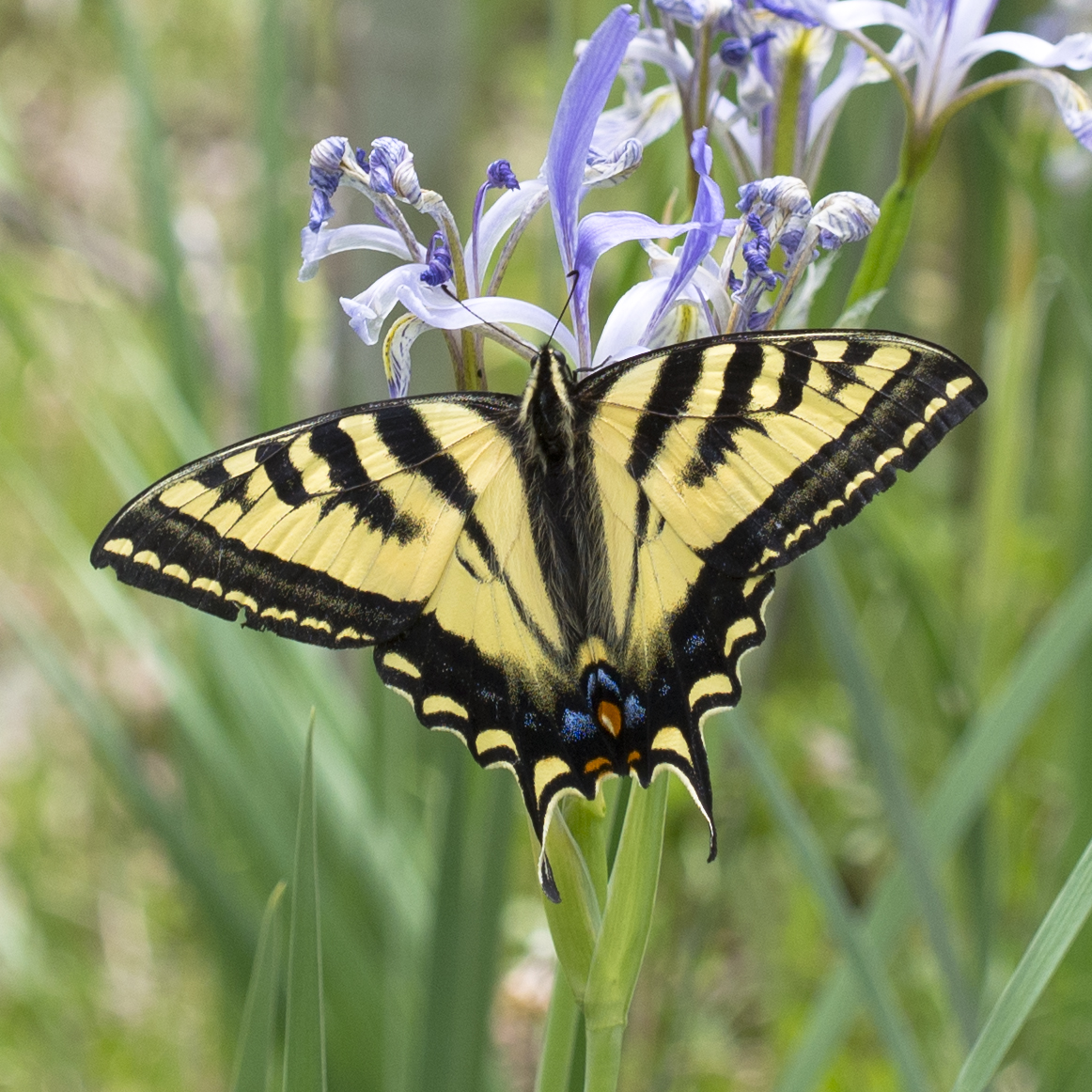Many Moab residents head to the La Sal Mountains during hot summer days, but recently a group headed up with a goal in mind: spot as many butterflies as possible.
On July 2, butterfly enthusiast Robb Hannawacker led the annual La Sal Mountains butterfly count. The group spotted 26 species and the data will be sent to the North American Butterfly Association.
The most common species observed were the western clouded sulphur (19 spotted this year), a yellow butterfly; the orange sulphur (14), an orange butterfly; and the western tiger swallowtail (14), a large butterfly with yellow and black stripes. The group also spotted a monarch, one of the most well-known butterflies in North America but one whose population has been steadily declining in recent years, according to the U.S. Fish and Wildlife Service.

Hannawacker said he started the La Sal Butterfly Count in 2016 when he was working at Arches National Park. He worked the fee booth, which he said wasn’t the most exciting job—to give himself more of a purpose, he said, he started cataloging butterflies in the region. As a child, he was always interested in insects, and butterflies most of all: not only are a butterfly’s wings beautiful, they also make species very easy to identify, he said.
This year’s butterfly count was one of the best-attended—Hannawacker partnered with Chris Quirin at the Canyon Country Discovery Center to recruit participants. While Hannawacker does keep track of the data, he said the primary goal of the butterfly count is to build a community of butterfly stewards.
“Ideally, once people learn and care about butterflies and moths more, hopefully, they’ll be better stewards of the environment,” he said. “They’ll have better knowledge of what’s out there, and know butterflies’ needs.”
The butterfly population of Southeast Utah is mostly unknown, Hannawacker said. He’s the first person, to his knowledge, who is making an attempt to track and survey butterflies in this region. There was an expedition in the 1920s, he said, and a private survey done in the 90s, but as far as building a database, Hannawacker’s observations, and the data gathered during the butterfly count, are laying the groundwork.

Since the population is still unknown, conservation can be tricky. Hannawacker has observed a total of 122 species in the area, he said, each with its own set of ecosystem requirements. One species that he’s specifically looking out for is the silverspot butterfly, an endangered species with two small populations in Utah: one in Grand County and one in San Juan County. The species has a handful of populations in southwest Colorado too.
“They’re beautiful and rare, and they’re a relic of the last Ice Age,” Hannawacker said. “With the introduction of the Anthropocene—our diverting of water changing habitats, and overgrazing—most all of them are gone.”
Hannawacker helped discover the population in San Juan County, he said. He wants to do more ecosystem and climate studies to see how climate change is further impacting butterfly populations—but to do that, he’d need decades’ worth of data, he said.
“What I’m hoping is that I’m laying some baseline data down, that maybe will be helpful for people in the future,” he said.
Butterfly populations are most easily observed in places with elevation change and creeks, Hannawacker said, because those are the places that have the most ecosystem overlap—places like the La Sal Mountains, the Book Cliffs, and the Abajo Mountains.
The butterfly data collection happens not only during the annual butterfly count—Hannawacker created a Facebook group a few years ago, “Butterflies and Moths of Southeast Utah,” which now has over 300 members.
He also utilizes the website iNaturalist, which allows people to upload photos of butterflies they see. If someone snaps a photo of a butterfly but they don’t recognize the species, they can upload it to the site, where Hannawacker or other members will help identify it. To date, the iNaturalist project has recorded over 2,000 observations in Grand and San Juan counties.
Anyone is welcome to join the Facebook group or post their observations to iNaturalist, Hannawacker said.




